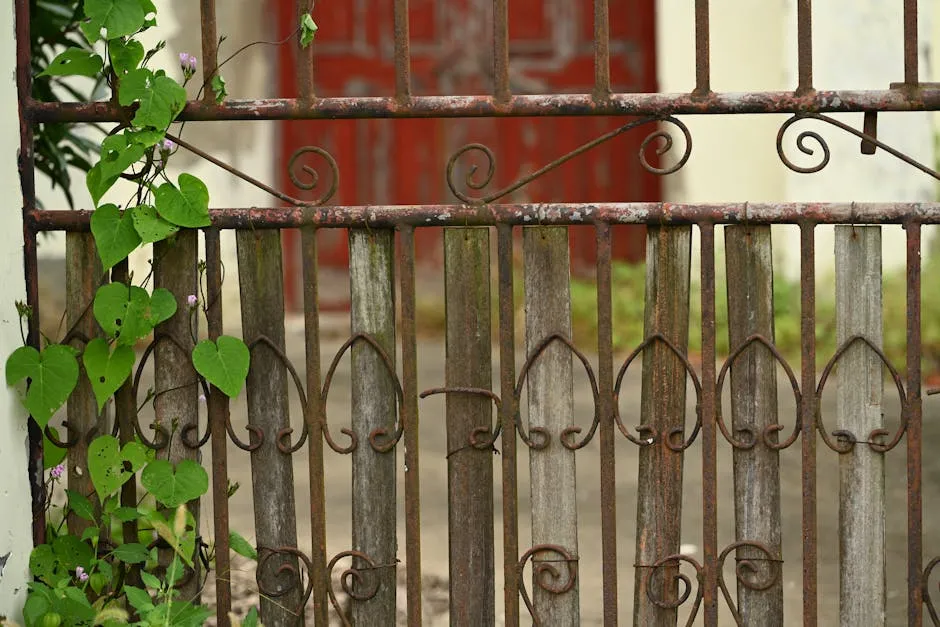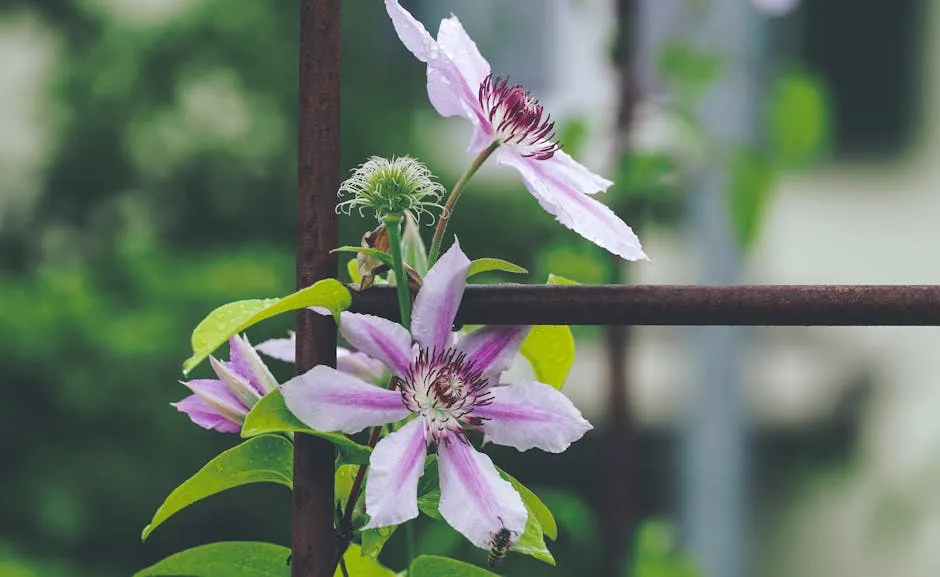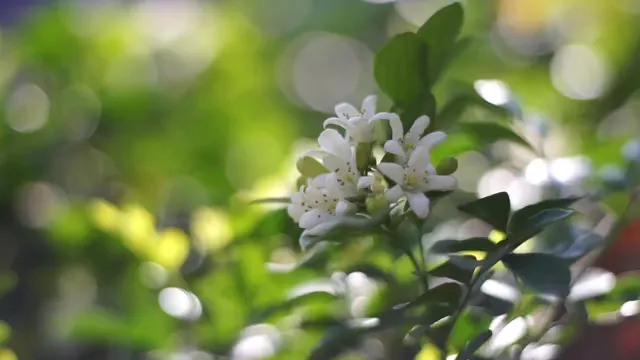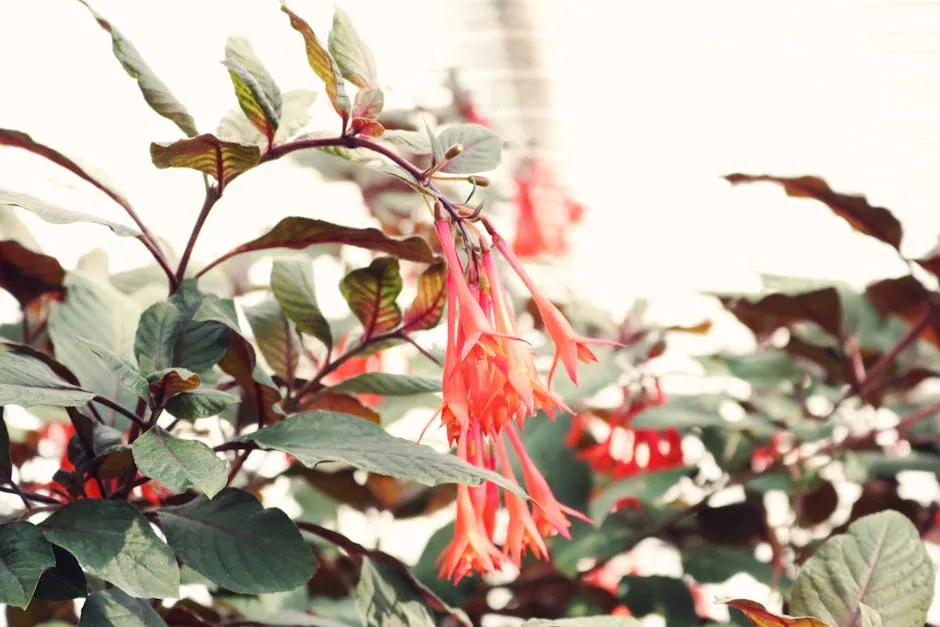

Best Flowering Vines for Privacy and Beauty
Introduction
Flowering vines are the unsung heroes of garden design. These green marvels offer a delightful blend of beauty and function. They can transform dull spaces into vibrant paradises, enhancing both privacy and aesthetics.
Imagine this: a plain fence suddenly cloaked in lush, flowering vines, softening its starkness. Flowering vines are versatile, growing quickly to create stunning privacy screens while adding color and fragrance. They can turn a mundane wall or fence into a lush tapestry of blooms.
Beyond mere beauty, these climbers attract pollinators like bees and butterflies. They create a serene atmosphere, perfect for relaxation. Whether you want to hide a less-than-appealing view or simply elevate your garden’s charm, flowering vines are the way to go. And don’t forget to give your plants the best start with organic slow-release fertilizer to nourish them!
Let’s explore why choosing flowering vines is a brilliant decision for your garden.

Why Choose Flowering Vines?
Benefits of Flowering Vines
- Privacy Enhancement: Flowering vines are excellent at blocking unsightly views. They weave their way up fences and trellises, effectively creating a natural privacy screen. No more peering neighbors! Instead, you can enjoy your space in peace.
- Aesthetic Appeal: The blooms of flowering vines are stunning. From vibrant morning glories to elegant clematis, these plants offer a palette of colors that can brighten any garden. Their foliage adds texture while softening harsh lines of structures.
- Wildlife Attraction: Many flowering vines are magnets for pollinators. Hummingbirds and bees flock to their blooms, ensuring your garden buzzes with life. This not only helps the environment but also adds a delightful sense of vitality to your outdoor space.
In addition, flowering vines can thrive in various conditions. Whether your garden basks in the sun or finds refuge in the shade, there’s a vine that fits your needs. They adapt well to different growing conditions, making them a reliable choice for many gardeners.
As you consider your options, remember that flowering vines are not just plants; they’re dynamic features that can elevate your garden’s privacy and beauty, all while inviting nature into your backyard. For those who want to get their hands dirty, a good pair of garden gloves will protect your hands while you work!

Factors to Consider When Choosing Vines
Choosing the right flowering vines can make or break your garden’s vibe. A few key factors will help you pick the perfect beauties for your space.
- Climate Considerations: Not all vines are created equal. Some thrive in specific climates, so it’s crucial to know your USDA hardiness zone. Do you live in a tropical paradise or a chilly region? Identifying your zone ensures you select vines that will flourish. This is your ticket to a thriving, colorful garden.
- Growing Conditions: Vines are like people; they have their preferences! Sunlight, soil type, and watering needs play a significant role. Most flowering vines love sunny spots, but some might prefer partial shade. Make sure the soil is well-drained and nutrient-rich for optimal growth. And don’t forget about watering—overwatering can drown your plants, while underwatering can leave them thirsty for attention!
And speaking of watering, you might want to invest in a reliable garden hose to make it easier!

Top Flowering Vines for Privacy and Beauty
Now that you know how to choose the right vines, let’s explore some fantastic options that add both privacy and beauty to your garden! These flowering vines are showstoppers, ready to climb, twine, and dazzle.
1. Clematis
Description: Meet Clematis, the diva of the vine world! This climber showcases stunning blooms in various colors, from deep purples to bright whites. It can reach impressive heights, making it perfect for covering fences or trellises. You can start your beautiful journey with Clematis plant seeds.
Ideal Conditions: Clematis loves full sun but prefers its roots cool. Well-drained, nutrient-rich soil is a must for this beauty to thrive.
Maintenance Tips: Prune after blooming to encourage a fuller appearance. Watch out for clematis wilt—it’s a real party crasher!

2. Wisteria
Description: Wisteria is the ultimate show-off with its cascading clusters of flowers. These fragrant blooms can turn any structure into an enchanting sight. Think of it as nature’s way of decorating! Grab your own with Wisteria plant seeds.
Ideal Conditions: Wisteria loves the sun and thrives in well-drained soil. It may take a few seasons to flower, but the wait is worth it for such a spectacular display.
Maintenance Tips: Prune regularly to control its growth. Train it properly to prevent it from becoming a tangled mess—after all, nobody likes a chaotic garden!

3. Jasmine
Description: Ah, Jasmine! Not only does it produce gorgeous blooms, but it also fills the air with a sweet fragrance that makes your heart sing. You can easily grow your own with Jasmine plant seeds.
Ideal Conditions: This vine loves full sun and prefers slightly moist, well-drained soil for optimal growth.
Maintenance Tips: Provide support structures to help it climb. Regular pruning will keep it in shape and promote new growth.

4. Climbing Roses
Description: The classic charm of climbing roses can’t be beaten. With their stunning blooms and intoxicating fragrance, they add elegance to any garden. Start your collection with Climbing rose plant seeds.
Ideal Conditions: These beauties thrive in full sun and need well-drained, nutrient-rich soil to flourish.
Maintenance Tips: Regular pruning and fertilization will keep them healthy. Watch out for pests—roses can be a magnet for unwanted guests!

5. Honeysuckle
Description: Honeysuckle brings a splash of color and a delightful aroma to your garden. These vines are often a go-to for creating natural privacy screens. You can find your own with Honeysuckle plant seeds.
Ideal Conditions: Full sun is best, though some varieties tolerate partial shade. Moist, well-drained soil is ideal for their growth.
Maintenance Tips: Prune to control their growth and enhance blooming. Be mindful of the type you choose; some can be invasive!

6. Virginia Creeper
Description: Virginia Creeper is a fast-growing vine that provides exceptional coverage and vibrant fall color. It’s a reliable choice for filling in gaps quickly! Consider planting Virginia creeper plant seeds for a quick cover-up!
Ideal Conditions: This vine adapts well to sun or shade, making it versatile for various garden settings.
Maintenance Tips: Prune regularly to prevent it from becoming too aggressive. Keep an eye on its spread!

7. Trumpet Vine
Description: With its striking tubular flowers, the Trumpet Vine is a hummingbird’s paradise! Its vibrant blooms can add a burst of color to your garden. You can get your own with Trumpet vine plant seeds.
Ideal Conditions: This vine prefers full sun and can tolerate a range of soil types, making it easy to care for.
Maintenance Tips: Prune to manage its growth. Be cautious, as it can spread quickly if left unchecked!

8. Morning Glory
Description: Morning Glory is a fast-growing annual that brings a cheerful touch to your garden. Its funnel-shaped blooms open in the morning, adding a splash of color. You can easily start with Morning glory plant seeds.
Ideal Conditions: This vine loves full sun and well-drained soil, making it a perfect candidate for bright spots.
Maintenance Tips: Provide support for climbing and prune to prevent overcrowding. It’s a quick bloomer, so enjoy the show!

Incorporating these flowering vines not only enhances privacy but also adds a touch of beauty to your outdoor space. Choose the right ones, and you’ll have a stunning garden that offers both seclusion and charm! And while you’re at it, consider installing a garden trellis to give them the support they need!

How to Support Your Vines
Trellis and Support Structures
To help your flowering vines reach their full potential, providing sturdy support structures is essential. Trellises, arbors, and fences are perfect for this task. These supports not only aid in growth but also add an artistic element to your garden. Here are some options to consider:
- Trellises: These come in various designs, from simple wooden frames to ornate metal structures. You can buy them pre-made or unleash your inner DIY expert and build your own. Ensure that the trellis is strong enough to support the weight of mature vines.
- Arbors: If you want to create a grand entrance to your garden, an arbor is the way to go. These structures provide a beautiful framework for climbing vines. They create a shaded walkway, making your garden feel more inviting.
- Fences: Using a fence as a climbing structure is a fantastic way to enhance privacy. Plant your vines at the base, and let them climb up. This not only beautifies the fence but also softens its appearance, creating a more natural look in your garden.
Speaking of supports, consider using plant support stakes to give your young vines a helping hand!

Installation Tips
When installing support structures, consider a few best practices to ensure your vines thrive. First, install the support before planting your vines. This prevents damage to roots later on. Position the trellis or arbor in a sunny spot, as most flowering vines love the light.
Make sure your structure is securely anchored to withstand the weight of the vines as they grow. You want to avoid any surprises when your lush greenery starts to climb! Lastly, gently guide the young vines onto the structure, encouraging them to twine around their new home. With the right support, your flowering vines will flourish, creating a beautiful tapestry in your garden.

Maintenance and Care
Watering and Fertilizing
To keep your flowering vines happy, ensure they get adequate water—especially during dry spells. Most vines thrive when their soil is consistently moist but not soggy. A good rule of thumb is to check the top inch of soil; if it’s dry, it’s time to water. For fertilizing, use a balanced, slow-release fertilizer in spring. This gives your vines the nutrients they need to grow lush and vibrant. Over-fertilizing can lead to excessive foliage and fewer flowers, so moderation is key. If you’re looking for quality fertilizer, check out this organic flower seeds to boost your garden!

Pruning
Regular pruning is essential for flowering vines. It helps shape the plant and encourages blooming. Each type of vine has its own pruning schedule, but a general rule is to prune after flowering. This prevents cutting off buds that will bloom in the following season. Pruning also removes dead or diseased wood, promoting healthier growth. Don’t be afraid to get a little snip-happy; a well-pruned vine encourages vigorous growth and stunning blooms.
Conclusion
Incorporating flowering vines into your garden is a savvy move for both privacy and beauty. These enchanting plants can transform bland fences and walls into lush, colorful displays while providing a natural shield from prying eyes. Not only do they enhance the aesthetics of your outdoor space, but they also create a sanctuary for wildlife. Bees, butterflies, and hummingbirds will flock to your garden, adding life to your green haven.
When selecting the best flowering vines, consider your specific needs and local conditions. Factors like climate, sunlight, and soil type play a significant role in how well your vines will thrive. With the right choices, you can cultivate a vibrant garden that offers both charm and seclusion. So, whether you want a fragrant jasmine or a cascading wisteria, there’s a flowering vine that’s perfect for your garden. Embrace these botanical beauties and watch your outdoor space flourish with color and life!
And while you’re out there enjoying your garden, why not sit back and relax on some outdoor patio furniture or enjoy a lovely evening with an outdoor fire pit!
FAQs
What are the fastest-growing flowering vines for privacy?
If you’re looking for speedy coverage, Wisteria, Morning Glory, and Trumpet Vine are excellent choices. Wisteria’s breathtaking blooms can quickly cloak structures, while Morning Glory adds vibrant colors with its rapid growth. Trumpet Vine, known for its tubular flowers, is another fast grower that attracts hummingbirds.
How do I choose the right flowering vine for my garden?
Selecting the perfect flowering vine depends on several factors. Consider your local climate, sunlight exposure, and soil type. Vines thrive in specific conditions, so knowing your USDA hardiness zone is crucial. Additionally, think about how much maintenance you’re willing to do. Some vines require more care than others.
What care do these vines require?
General care for flowering vines includes regular watering, especially during dry spells. Fertilizing with a balanced slow-release formula in spring promotes healthy growth. Pruning is also vital; it encourages more blooms and helps maintain the desired shape. Be sure to keep an eye on your vines for any signs of pests or disease.
Are there any invasive flowering vines I should avoid?
Yes, some flowering vines can be invasive. For example, Wisteria and Trumpet Vine can spread rapidly and become difficult to manage. It’s essential to research the specific variety you plan to plant and consider alternatives like Honeysuckle or Clematis, which are beautiful yet less aggressive.
For a deeper understanding of how to enhance your garden’s design while also attracting pollinators, check out this article on Creating a pollinator-friendly garden design.
Please let us know what you think about our content by leaving a comment down below!
Thank you for reading till here 🙂
For best practices on how to keep your container gardens well-watered, refer to our guide on Best practices for watering container gardens.
All images from Pexels



